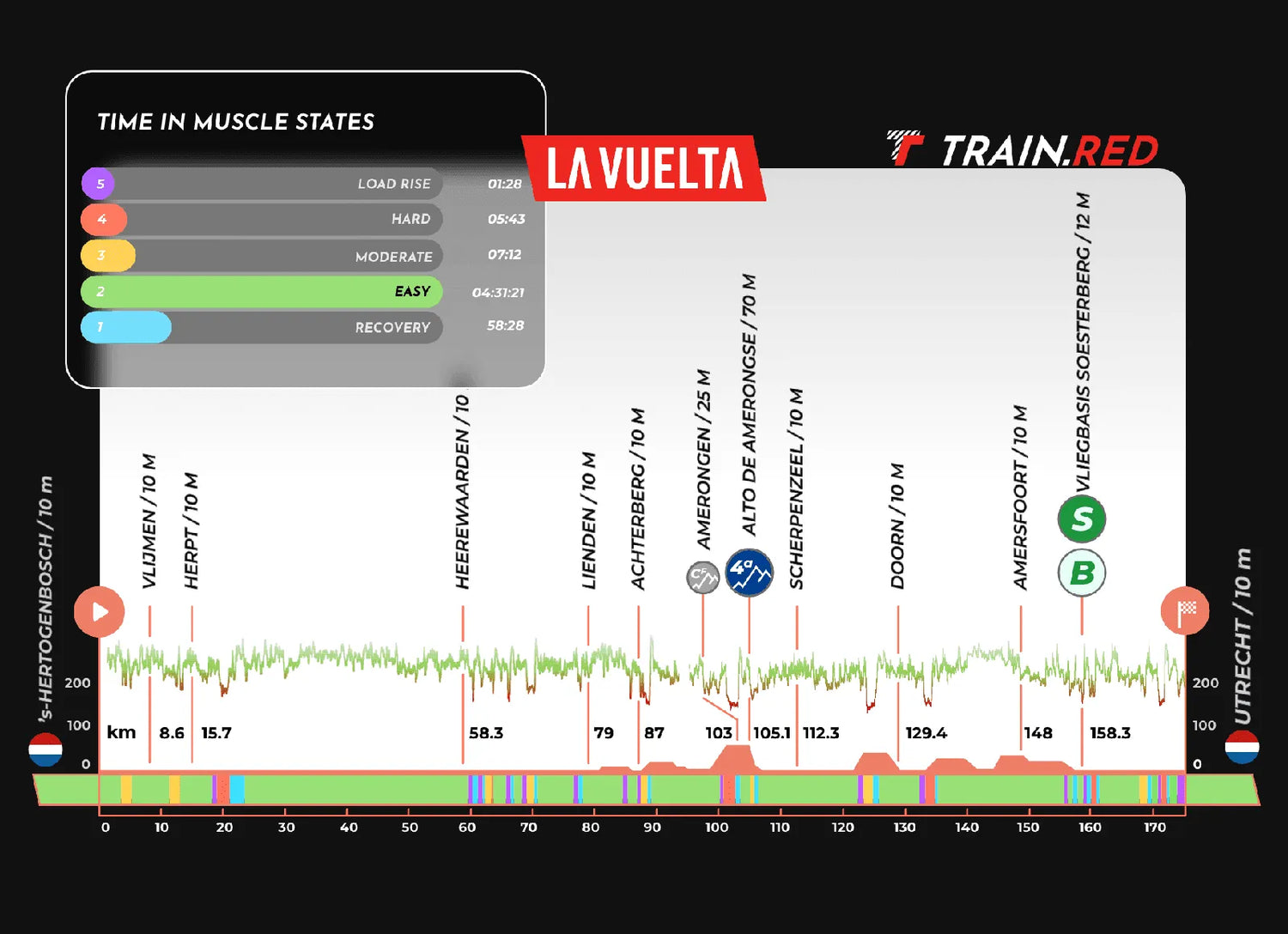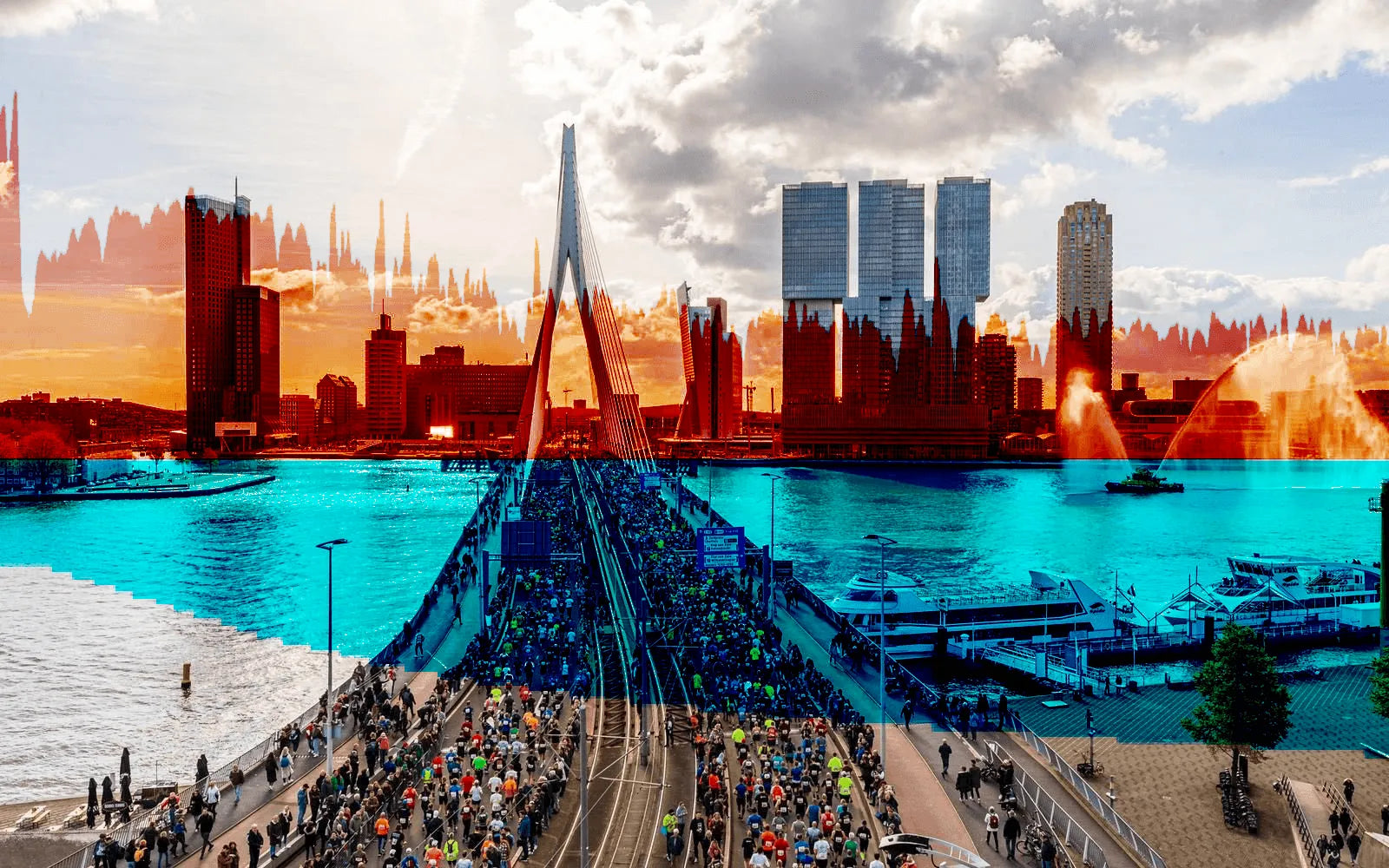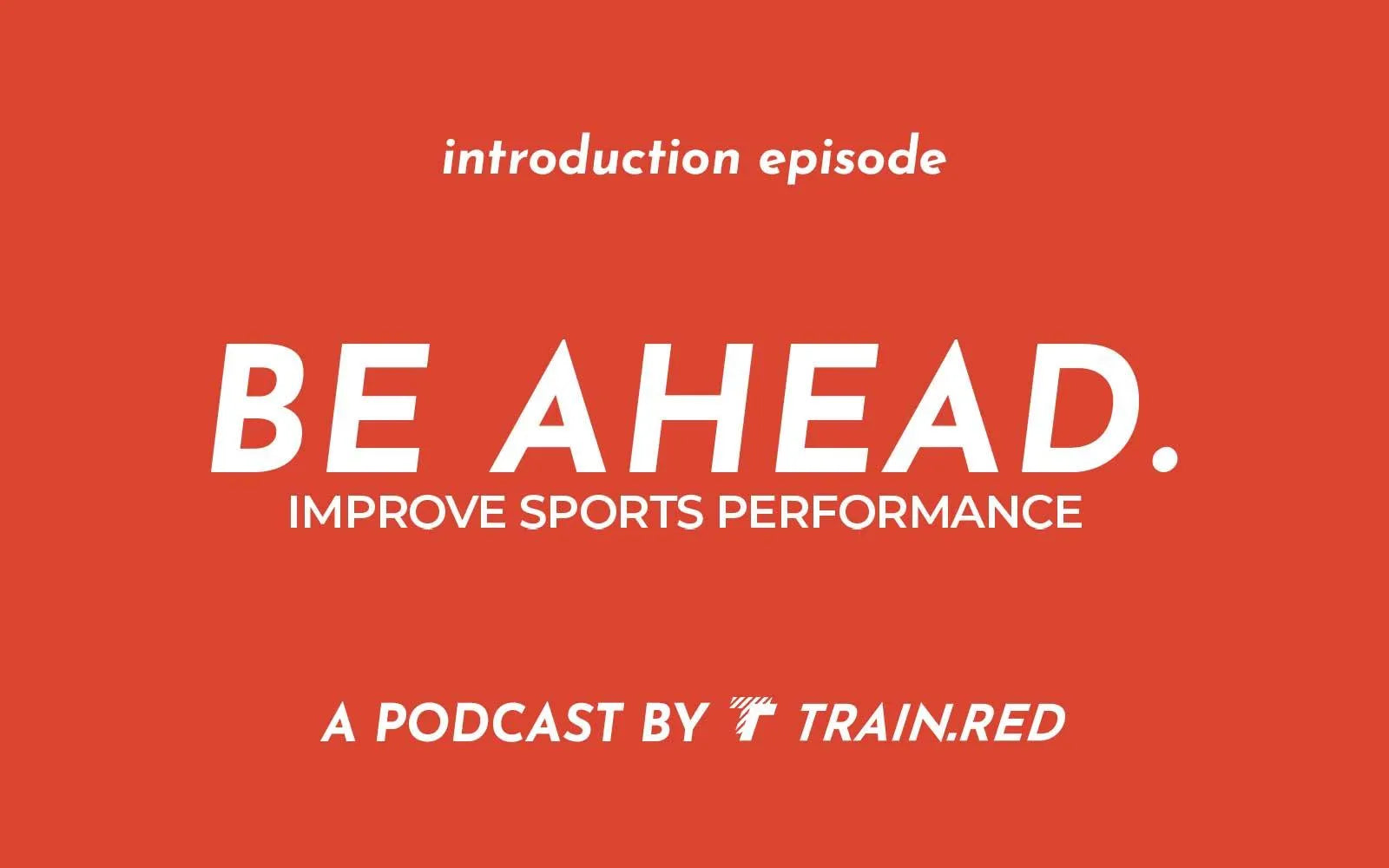‘S-HERTOGENBOSCH – UTRECHT
Just before Train.Red is visiting Spain for the European College of Sports Science in Seville from august 28th till September 2nd, Spain is visiting us! Today, the 19th of august, one of the three major cycling tours, the Vuelta is kicking off in Utrecht with a Team Time Trial.
This makes Utrecht the first city in the world to host all three major cycling tours; the Giro d’Italia in 2010, the Tour de France in 2015, and now La Vuelta in 2022.
To celebrate the Gran Salida in the Netherlands, we wanted to provide insight into your muscles functioning throughout a cycling stage. Although the Team Time Trial is truly an event for the data geeky specialists, it is hard to go all out in Utrecht, because well… try googling Utrecht and bike traffic.
With the second stage battling over the Grebbeberg, ‘Alto de’ Amerongen, and possibly the widest cycling lane in the Netherlands for an intermediate sprint in Soesterberg, stage 2 allowed for a challenging but safe ride, with some friendly competition on the relevant sections.
Although pancake-flat in comparison to the sequel of the course in Spain, the stage will impact your muscle, which results in local desaturation (your muscle uses more oxygen than supplied) in the quads. Let’s have a look a stage 2 of La Vuelta Holanda, Vamonos!
START – 175,1 KM TO GO
Strapped in with the Train.Red FYER we make a start in ‘s Hertogenbosch. All the cyclists have to climb is speed bumps and cobbles for the first 80 km. This does not mean there is a perfectly stable oxygenated state! Early attacks to make it in the breakaway or lacking warm-up protocols can be the cause of a disbalance between the supply and demand of the muscles, resulting in a decreasing saturation in the tissue.
Truth being said, with this cycling lane edition of the second stage, it was not possible to truly recreate a race setting. Three fit individuals took on the challenge of matching the course and distance as accurately as possible, and put up the pressure on the hills and marked sprints. With a background in respectively CrossFit, middle-distance running, and triathlon the cyclists were by no means professional cyclists and there were some interesting inter-individual differences throughout the ride.
Looking at the first hour, for example, we can see a clear difference between the different athlete types. Sensors were placed over the right and left 'vastus lateralis', the majorly involved muscle in cycling that is part of the upper leg. For this graph the muscles on the right are visualized:

Zooming out, it is likely that most professional cyclists who are not trying to make the early breakaway will survive this first section of the stage without too much effort. Power output is high but maintainable for these athletes and the balance between oxygen supply and oxygen demand will be relatively stable.
‘ALTO’ DE AMERONGEN – 70 KM TO GO
The first KOM points of this Vuelta can be earned on the Amerongseberg. The classified ‘hill’ has an ascent of 2,1 kilometers at an average gradient of 2,4% but it is not the only hilly section the riders tackle in the Utrecht Hill Ridge. After the Grebbeberg and a short pancake stop, we pushed the speed up on our slightly adapted variant of the course. Respectively the ‘alto de Amerongen’, the Amersfoortseweg, and the pyramid of Austerlitz. Looking at the oxygenation of the upper leg over this section, it is clear to see these hills are far from easy on the athletes.

It will be tough, but what we sometimes tend to forget is that even the sprinters in the peloton are mainly endurance athletes. These small hills will tax their body and fatigue the muscles, but with help from their teammates, the sprinters will likely survive these climbs without too much damage. The peloton can get ready for a flat and fast final!
INTERMEDIATE SPRINT – 17 KM TO GO
Just before we’re truly buckling up for the final of the race, we can expect quite some spectacle on the landing strip in Soesterberg. This former military airport is now active as an information center, museum, and nature reserve, but today the wide lane is the scenery of an intermediate sprint.
During the sprint, there’s a bit more in play than just our aerobic energy pathways. The explosion of power is the result of all systems working at the maximum of their capabilities. With the Train.Red technology, we measure the changes in oxygen in your muscle tissue. Although we do not measure the anaerobic mechanisms, a sprint and its lead-out can be very relevant and interesting to study with the sensors. Similar to the hilly sections, we see a desaturation, the downwards slope indicating that more oxygen is consumed by the muscle than extracted into the muscle. This slope tells us something about the mitochondrial functioning of the cyclist. The faster the recovery after an effort, the better of course, again the trend of the signal that provides us with the most insight.
Already in the lead-out towards a sprint, we can see that just the oxidative mechanisms cannot cope with the need for energy. Ideally, the trace is as smooth and stable as possible until the actual effort, but what we see down below is that early moves and positioning play their role and have an influence on the sprint following afterward.

FINISH – 0,3 KM TO GO
The all-out effort at the finish line is what this stage will be all about. Even though as Dutch people the Utrecht Hill Ridge might feel like a mountain range, for trained professionals this will not be enough to make a difference with the peloton and respectively, the specialist sprinters.
What we see in the data below is an ideal scenario; an effort to get a proper position, and a bit of recovery in the wheel of the lead-out train before the final sprint is unleashed.

Now it’s time for the professionals to take on stage 2 of La Vuelta, where do you think the difference will be made? Early break-away because of a sleeping peloton? Attack on the KOM climb or will it become a sprint finish?
Our predictions:
🚂 🚂 🚂: Tim Merlier for Alpecin-Deceunick
🚂 🚂 Pascal Ackermann for UAE Team Emirates
🚂 Sam Bennett for BORA-hansgrohe
Want to get insight into your muscles? Get the Train.Red FYER to start improving your performance.



